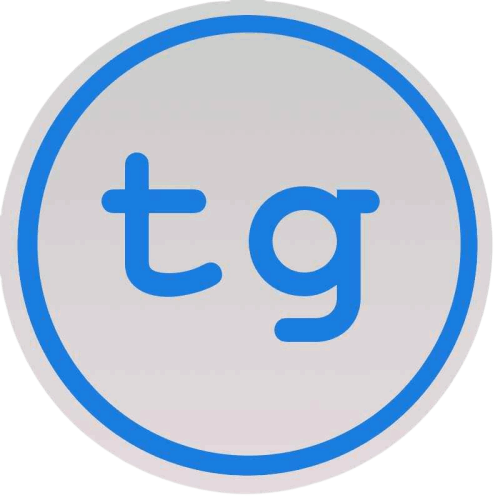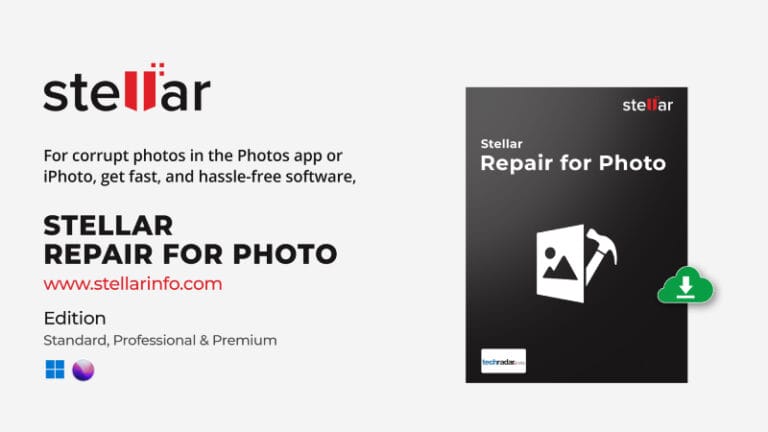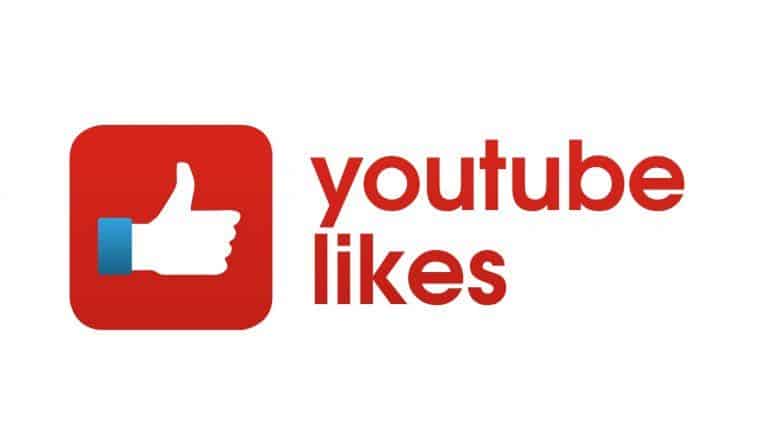12 Emerging Social Media Platforms to Watch in 2025

Are you feeling the fatigue of saturated algorithms and dwindling organic reach on established platforms like Facebook, X, and Instagram? You’re not alone. Many creators, marketers, and community builders are searching for more authentic connections and engaged audiences, free from the noise of legacy social networks. The constant fight for visibility and growing data privacy concerns have pushed users to seek alternatives that prioritize genuine interaction and niche community-building over mass-market broadcasting. This search for better online spaces is where emerging social media platforms become a strategic advantage.
This resource list is designed to cut through the hype and provide a practical guide to the most promising new contenders. We move beyond simple descriptions to offer a detailed analysis of what makes each platform unique. Inside, you will find a breakdown of core features, target audiences, and key growth indicators for networks like Threads, Bluesky, Farcaster, and more.
Our goal is to give you the actionable intelligence needed to decide where to invest your time and resources. For each platform, we include screenshots for a real-world feel and direct links to get you started immediately. Consider this your definitive roadmap to discovering the next wave of digital communities and finding the perfect fit for your brand, project, or personal network.
1. Apple App Store – Social Networking category
While not a social platform itself, the App Store’s Social Networking category is an indispensable discovery engine for finding emerging social media platforms, particularly those launching with a mobile-first strategy. Apple’s rigorous App Review process acts as a powerful quality filter, ensuring that listed apps meet high standards for safety, privacy, and functionality. This makes it a trusted starting point for users wary of unvetted new services.
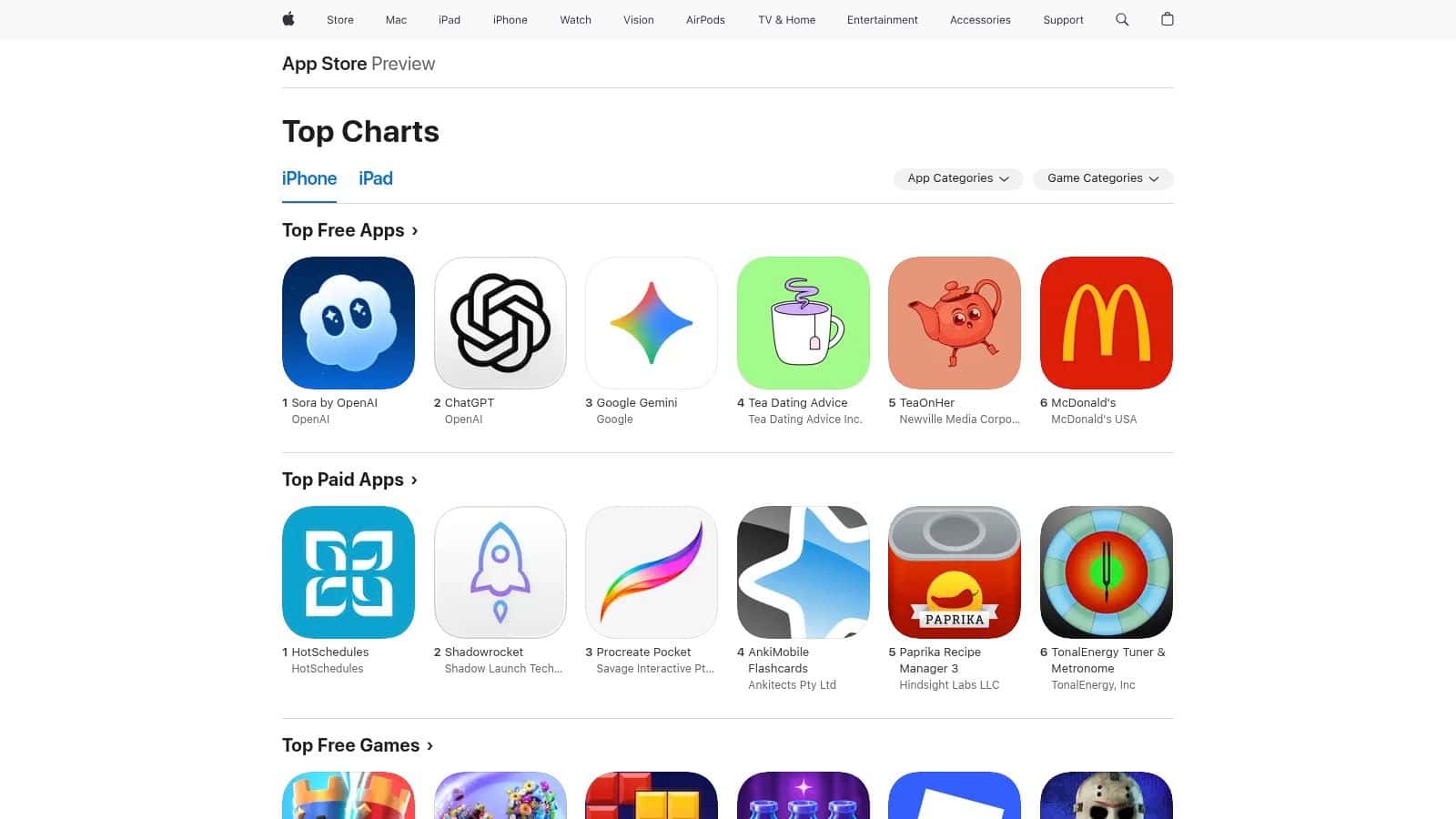
Its curated collections and editorial spotlights often highlight innovative apps before they achieve mainstream recognition. The integrated system for ratings, reviews, and updates provides a transparent, all-in-one management experience. While the platform is exclusive to iOS users and can feel crowded, it remains a premier source for high-quality, secure social applications.
Key Insights & Usage Tips
- Access & Availability: Free to browse on any iPhone, iPad, or Apple Vision Pro. Apps may be free, paid, or have in-app subscriptions.
- Discovery Tip: Use specific keywords like “decentralized social” or “creator community” in your search to bypass major players and uncover niche platforms. Also, check the “You Might Also Like” section on app pages you find interesting.
- Pros: High safety and privacy standards, seamless app installation and subscription management, and strong editorial curation.
- Cons: Limited to the Apple ecosystem; some apps may debut on Android first. Discovery can be challenging without specific search terms.
Link: Apple App Store – Social Networking
2. Google Play – Social category (Android)
As the primary storefront for the world’s largest mobile operating system, the Google Play Store’s Social category is a vital resource for discovering emerging social media platforms. Its massive scale means many new apps, especially from indie developers or those testing new concepts, often debut here first. The platform’s more open publishing model leads to a vast and diverse inventory of social applications that might not be available elsewhere.
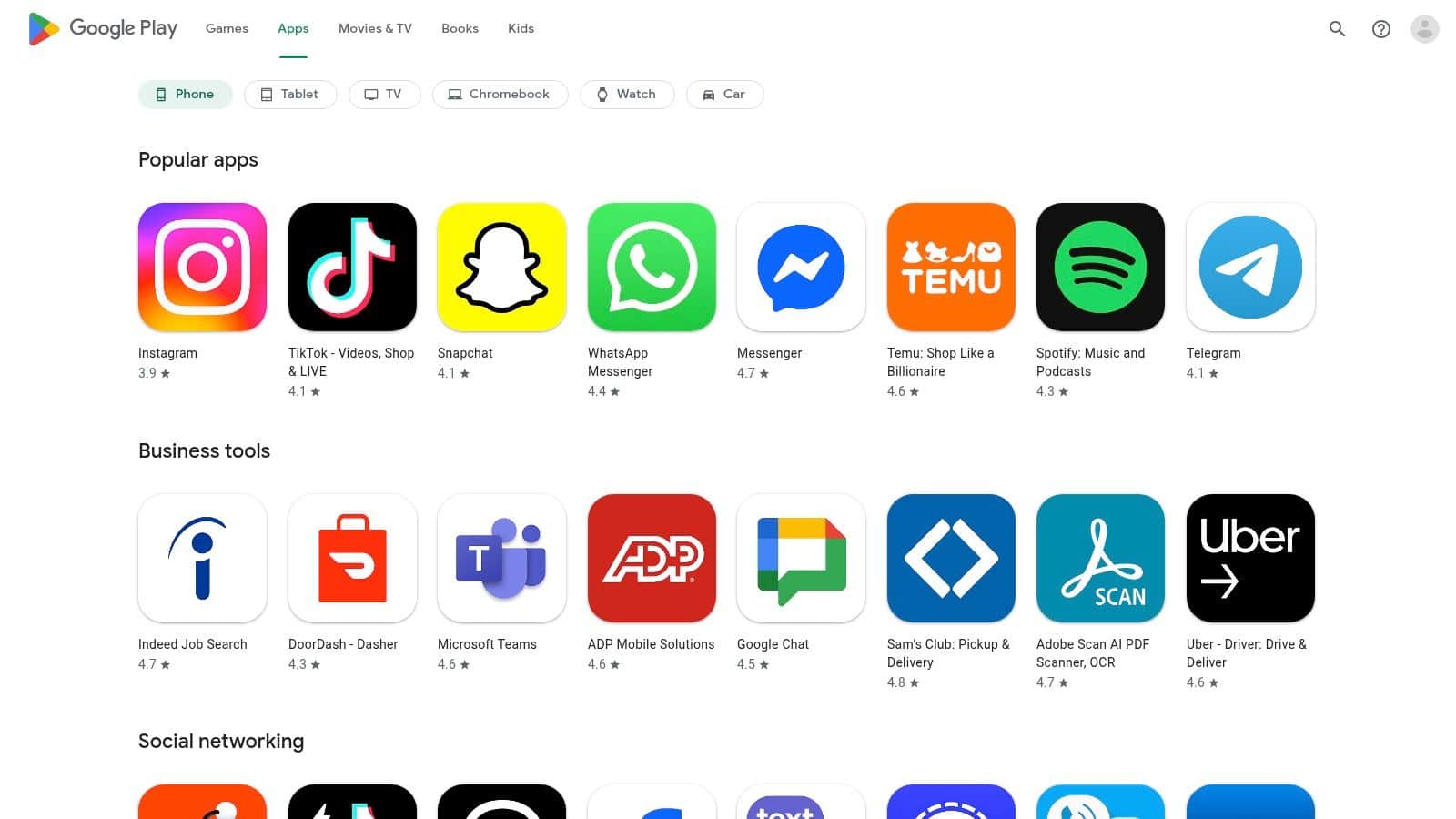
Google Play provides detailed app pages with user ratings, review histories, download counts, and recent update information, offering crucial signals about a new app’s momentum and developer responsiveness. Features like pre-registration for upcoming launches allow early adopters to get notified the moment a new platform goes live. While its app vetting is less stringent than Apple’s, its sheer volume makes it an essential tool for comprehensive market exploration.
Key Insights & Usage Tips
- Access & Availability: Free to browse on any Android device or web browser. Apps are clearly labeled as free, paid, or containing in-app purchases.
- Discovery Tip: Use the “New” and “Top grossing” filters within the Social category to spot apps that are gaining traction. The “Similar apps” feature is also effective for finding related niche communities.
- Pros: Enormous app selection with many exclusive early-stage launches, detailed app metrics on download counts and update frequency, and pre-registration for anticipated releases.
- Cons: App quality can vary significantly due to a less rigorous review process. The web interface for browsing categories can sometimes feel less intuitive than the native app.
Link: Google Play – Social
3. Product Hunt
Product Hunt serves as a daily leaderboard for new tech products, making it a goldmine for discovering emerging social media platforms on their launch day. It’s not just a directory; it’s a community where tech enthusiasts, investors, and founders converge to discuss, upvote, and provide feedback on new ventures. This interactive environment provides invaluable early insight into a platform’s potential traction and the vision of its creators, often long before it hits mainstream news or app stores.
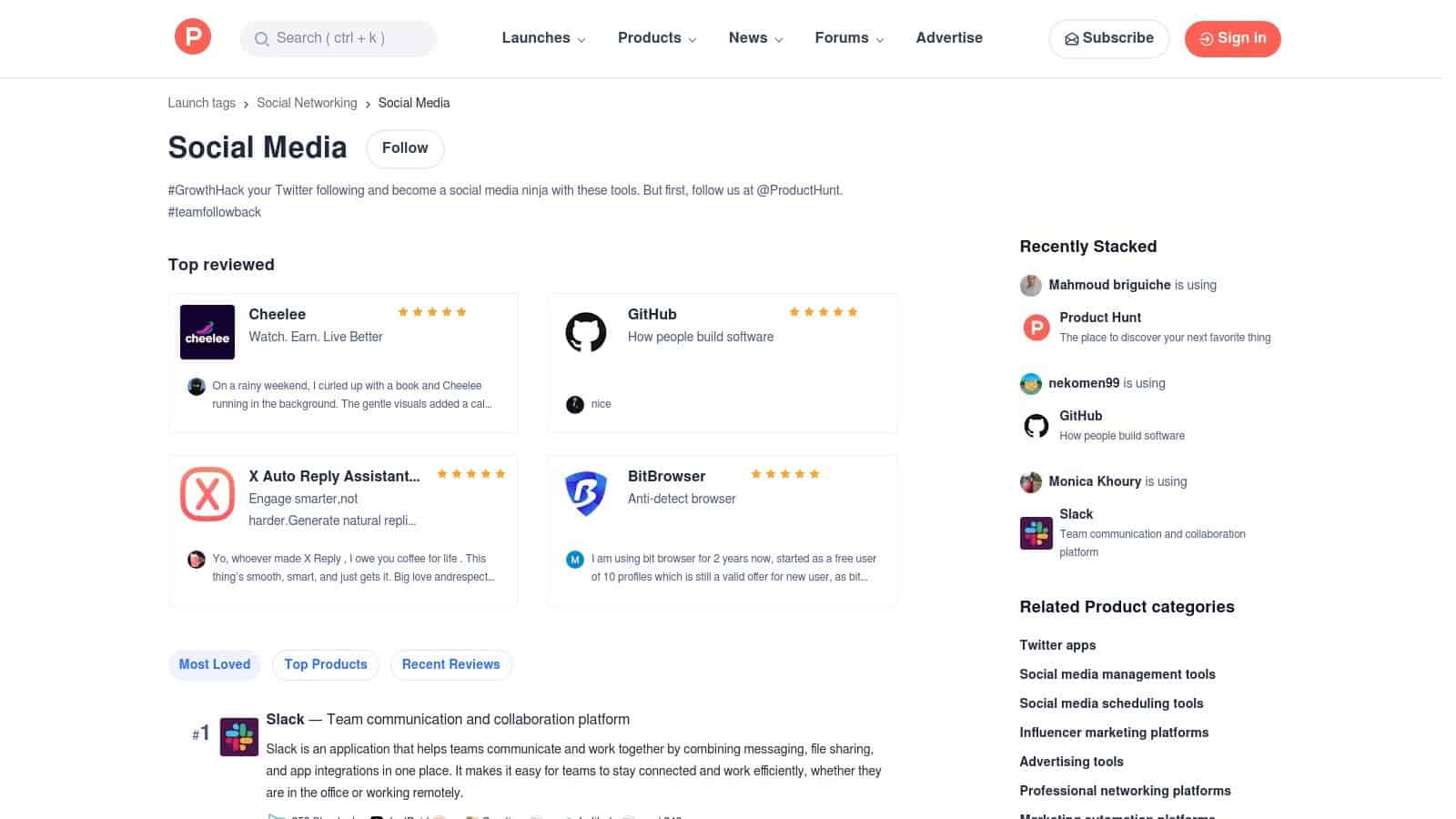
The platform’s real-time ranking system, driven by user upvotes, quickly surfaces the most buzzworthy apps. Its “Topics” feature allows you to filter specifically for social media tools, while founder AMAs and comment threads offer a direct line to the people building these new services. While the launch-day focus can create fleeting hype for products that don’t last, it is an unparalleled resource for spotting true innovation at the earliest possible stage.
Key Insights & Usage Tips
- Access & Availability: Free to browse and create an account. Products listed have direct links to their own sites or app store pages.
- Discovery Tip: Use the “Social Media” topic filter and sort by “Newest” to find platforms that just launched. Follow curated “Collections” related to social networking or community tools for regular updates.
- Pros: Excellent for very early-stage discovery, direct interaction with founders, and authentic community feedback. The search and filter functions are powerful.
- Cons: Strong launch day bias can be misleading; many listed products fail to gain long-term traction or are still in a buggy beta phase.
Link: Product Hunt – Social Media Topic
4. BetaList
BetaList serves as a launchpad for the next wave of internet startups, making it an excellent resource for discovering emerging social media platforms before they even hit the mainstream. The platform features a curated directory of pre-launch and newly launched companies, often while they are still in private beta. This provides a unique opportunity for early adopters to get in on the ground floor, securing coveted usernames and providing feedback that can shape a platform’s development.
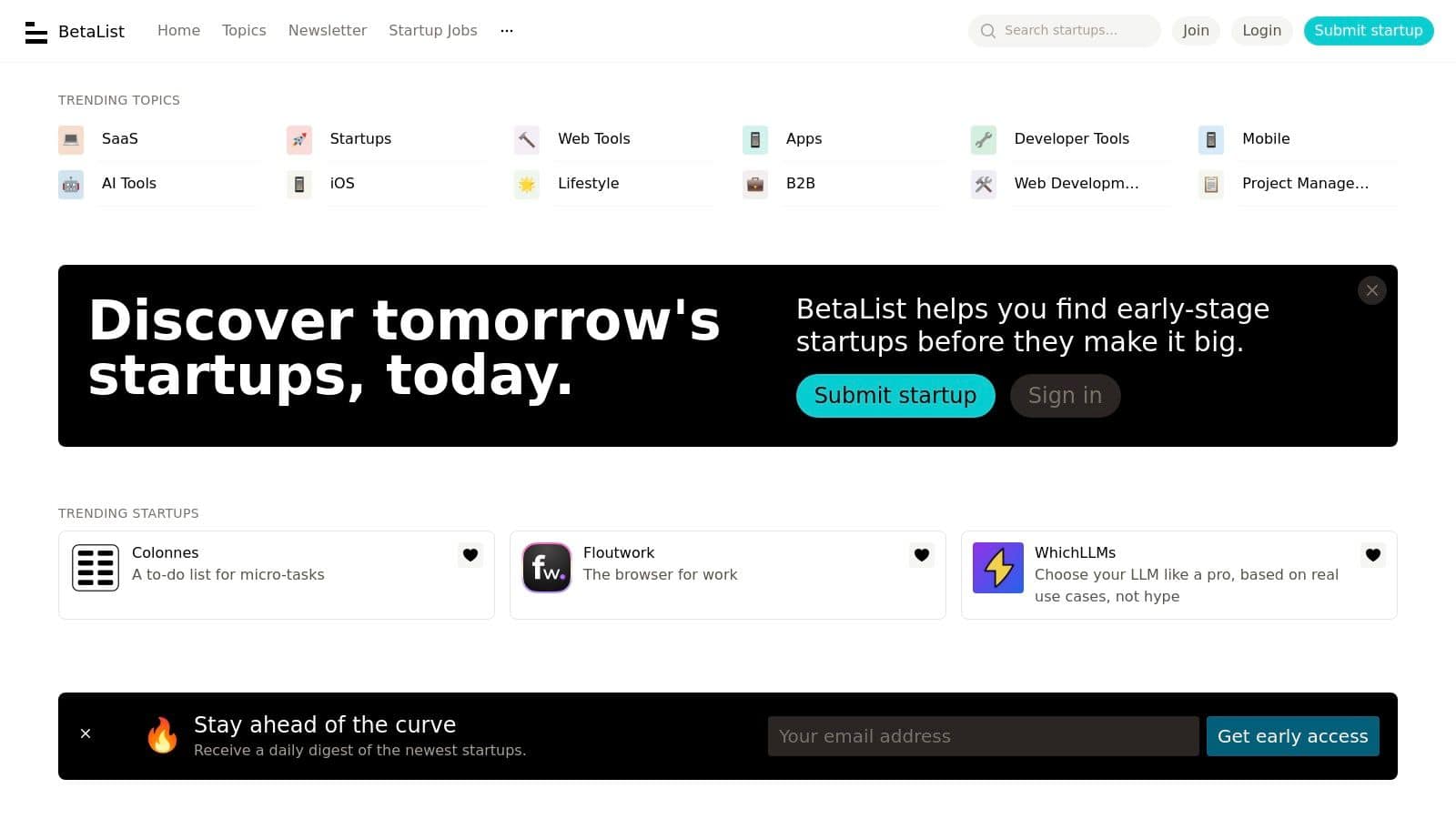
Unlike app stores, which list established products, BetaList is all about what’s coming next. It allows users to browse startups by market, join waitlists, and request early access directly from the founders. This direct line to new technology makes it an invaluable tool for tech enthusiasts and marketers looking to spot trends. For founders, getting featured here can be a crucial first step, acting as an essential tool to validate an app idea and build an initial user base.
Key Insights & Usage Tips
- Access & Availability: Free to browse and sign up for startup waitlists. Founders can pay for a faster review to get their startup listed.
- Discovery Tip: Use the “Social Network” and “Community” categories to filter the listings. Subscribe to the daily or weekly newsletter to get new startups delivered directly to your inbox.
- Pros: Access to platforms before public launch, opportunity to claim unique usernames, and direct interaction with founders.
- Cons: Products are often unstable or may pivot significantly. The lack of user reviews means you have to perform your own due diligence.
Link: BetaList
5. Threads by Instagram (Meta)
Threads is Meta’s text-based social app, designed as a direct competitor to X (formerly Twitter). It leverages the massive Instagram network, allowing users to sign in with their existing accounts, which instantly provides a built-in audience and social graph. This integration makes Threads one of the most rapidly adopted emerging social media platforms, bypassing the cold-start problem that plagues many new networks.
The platform is rapidly evolving with a clean, user-friendly interface on both mobile and web. Recent updates, like a robust desktop version with multiple columns and improved search, signal a strong commitment to feature parity with established rivals. Threads fosters a more conversational and less overtly political environment, attracting users and brands looking for a positive space for public discourse. The platform’s growth is a key example of the trends shaping user engagement on social media.
Key Insights & Usage Tips
- Access & Availability: Free to use on web, iOS, and Android. An Instagram account is required to create a Threads profile.
- Discovery Tip: Use the “Following” feed to filter out algorithmic suggestions and focus solely on accounts you have chosen to follow. Engage with relevant hashtags to increase the visibility of your posts within specific communities.
- Pros: Immediate network effects from Instagram integration, a cleaner and more positive user experience, and frequent, meaningful product updates from Meta.
- Cons: Deeply tied to the Meta ecosystem and its data privacy policies; the feature set is still maturing compared to more established competitors.
Link: Threads
6. Bluesky
Bluesky is an independent social network built on the decentralized AT Protocol, positioning itself as a more open and user-controlled alternative to centralized platforms. Its key differentiator is the promise of account portability and algorithmic choice, allowing users to select or even build their own content feeds. This emphasis on an open ecosystem has attracted a vibrant community of developers and tech-savvy users looking for one of the most promising emerging social media platforms.
The user experience feels familiar to former Twitter users, but with unique features like custom feeds for niche topics such as “Cat Pics” or “Paleontology.” While its core feature set and moderation tools are still evolving, the platform’s rapid growth and active development make it a significant contender. Its commitment to decentralization means users aren’t locked into a single app or server, offering a glimpse into a more federated social future.
Key Insights & Usage Tips
- Access & Availability: Free to join on the web, iOS, and Android. No invitation is required.
- Discovery Tip: Explore the “Feeds” tab to find and pin custom algorithms tailored to your interests. This is the best way to curate your timeline beyond the default “Following” feed.
- Pros: Open ecosystem ethos with true account portability, rapid growth with active developer tooling, and customizable content feeds.
- Cons: Feature set and native moderation tools are still maturing compared to established networks; the quality of third-party clients can vary significantly.
Link: Bluesky
7. Mastodon
Mastodon stands out among emerging social media platforms by offering a decentralized, ad-free alternative to mainstream networks. It operates on the ActivityPub protocol, creating a “fediverse” of interconnected yet independent servers, known as instances. Users join a specific instance, each with its own community rules and moderation policies, but can still follow and interact with users across the entire network. This structure empowers community governance and prioritizes user privacy over corporate interests.
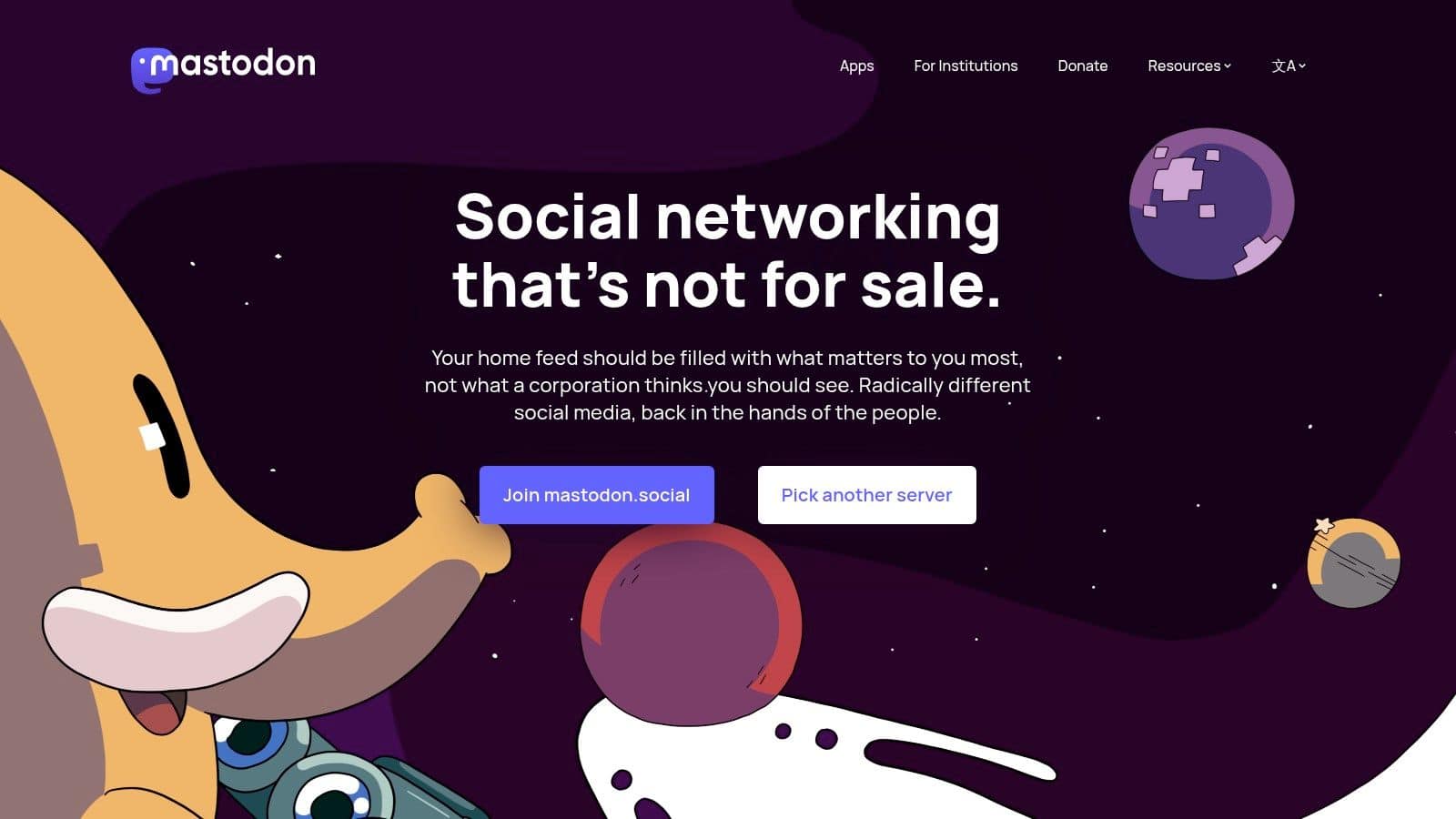
The platform is defined by its user-centric features, including a strictly chronological feed free from algorithmic manipulation. It also supports rich media posts, robust content warning tools, and custom emojis specific to each server. While the initial server selection can present a learning curve for new users and organic discovery is slower, the result is a more intentional and community-driven social experience that offers a genuine escape from commercialized social media.
Key Insights & Usage Tips
- Access & Availability: Free to use on the web and through numerous third-party mobile apps. Some instances may request donations to cover server costs.
- Discovery Tip: Use the official server-picker tool on the Mastodon website to find a community that matches your interests, like art, technology, or local groups. Once joined, you can follow hashtags to discover content across the fediverse.
- Pros: Strong focus on community governance and privacy, completely ad-free experience, and no central algorithm controlling your feed.
- Cons: The onboarding process of choosing an instance can be confusing for newcomers; discovery of new content and users can be less intuitive.
Link: joinmastodon.org
8. Farcaster via Warpcast
Farcaster is a decentralized social protocol where users control their identity and data, making it a standout among emerging social media platforms. Warpcast is its most popular client app, offering a familiar microblogging experience similar to X (formerly Twitter). Its core innovation lies in its on-chain identity management and off-chain data storage, creating a system that is both secure and scalable, while preventing any single company from controlling the network.
The platform is defined by its vibrant ecosystem of third-party apps built on the same open protocol, including specialized clients for art, long-form content, and analytics. This open approach fosters rapid innovation and gives users choice in how they access the network. While its crypto-native foundation presents a learning curve for newcomers, the highly engaged community of builders and tech enthusiasts makes it a hub for cutting-edge social experiments.
Key Insights & Usage Tips
- Access & Availability: Free to use. Available on iOS, Android, and the web. A small network fee may be required for initial account setup to prevent spam.
- Discovery Tip: Explore different “channels” (topic-based feeds) to find communities aligned with your interests, from tech and crypto to art and gaming. Engaging in popular channels is the fastest way to build a following.
- Pros: True user-owned identity, censorship-resistant by design, and a developer-friendly API that encourages a rapidly growing app ecosystem.
- Cons: Web3 concepts can be intimidating for the average user. The protocol and its clients are still in active development, leading to occasional instability.
Link: Warpcast
9. Hive Social
Hive Social offers a refreshing alternative for users nostalgic for the earlier days of social media, blending familiar features from platforms like Twitter and Instagram into a single, mobile-first experience. Its core appeal lies in its commitment to a chronological feed, allowing users to see posts from accounts they follow in the order they were shared. This straightforward approach eschews complex algorithms, giving users more control over their content consumption.
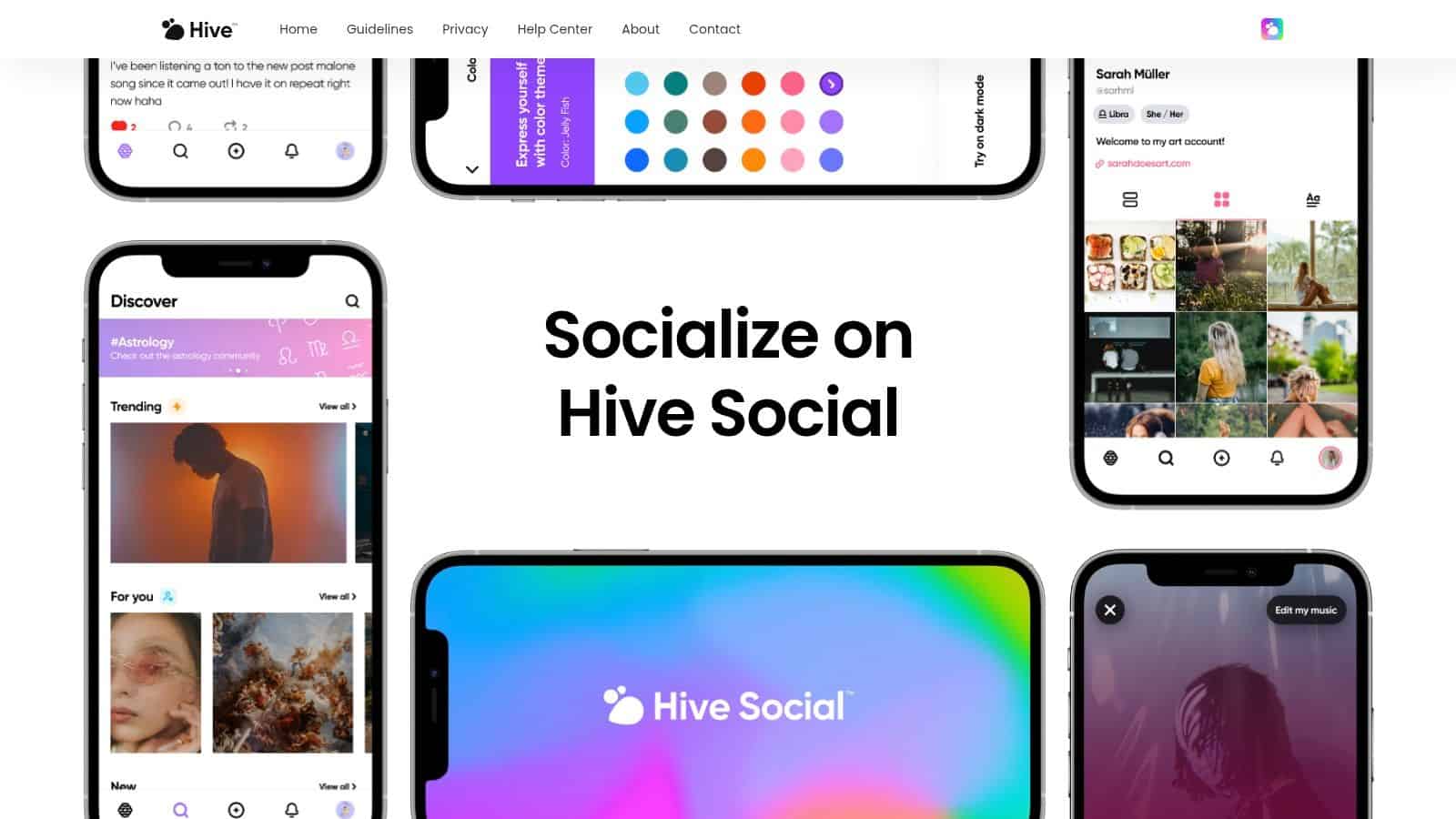
The platform heavily emphasizes creative self-expression through highly customizable profiles, which can feature personal color themes and even background music. This focus on individual identity has helped it attract artists, writers, and other creators looking for a more personalized online space. While its user base is smaller, Hive represents a significant trend in the rise of niche social apps that prioritize user experience over algorithmic engagement, making it one of the more interesting emerging social media platforms to watch.
Key Insights & Usage Tips
- Access & Availability: Free to use. Primarily available on iOS, with an Android version that has experienced periods of instability.
- Discovery Tip: Use the “Explore” tab to find trending topics and new creators. Engaging within smaller communities by using relevant hashtags can quickly increase your visibility on the platform.
- Pros: Algorithm-free chronological timeline, strong focus on creative expression and profile customization.
- Cons: Historically mobile-only with an unstable Android experience; smaller network effects mean fewer users compared to mainstream giants.
Link: Hive Social
10. Lemon8
Created by ByteDance, Lemon8 is a lifestyle-focused social platform that blends the visual discovery of Pinterest with the polished aesthetic of Instagram. It targets creators and users interested in high-quality content across niches like fashion, beauty, food, and wellness. The platform emphasizes aesthetic, magazine-style posts made easy with powerful built-in creation tools, making it one of the more visually-driven emerging social media platforms.
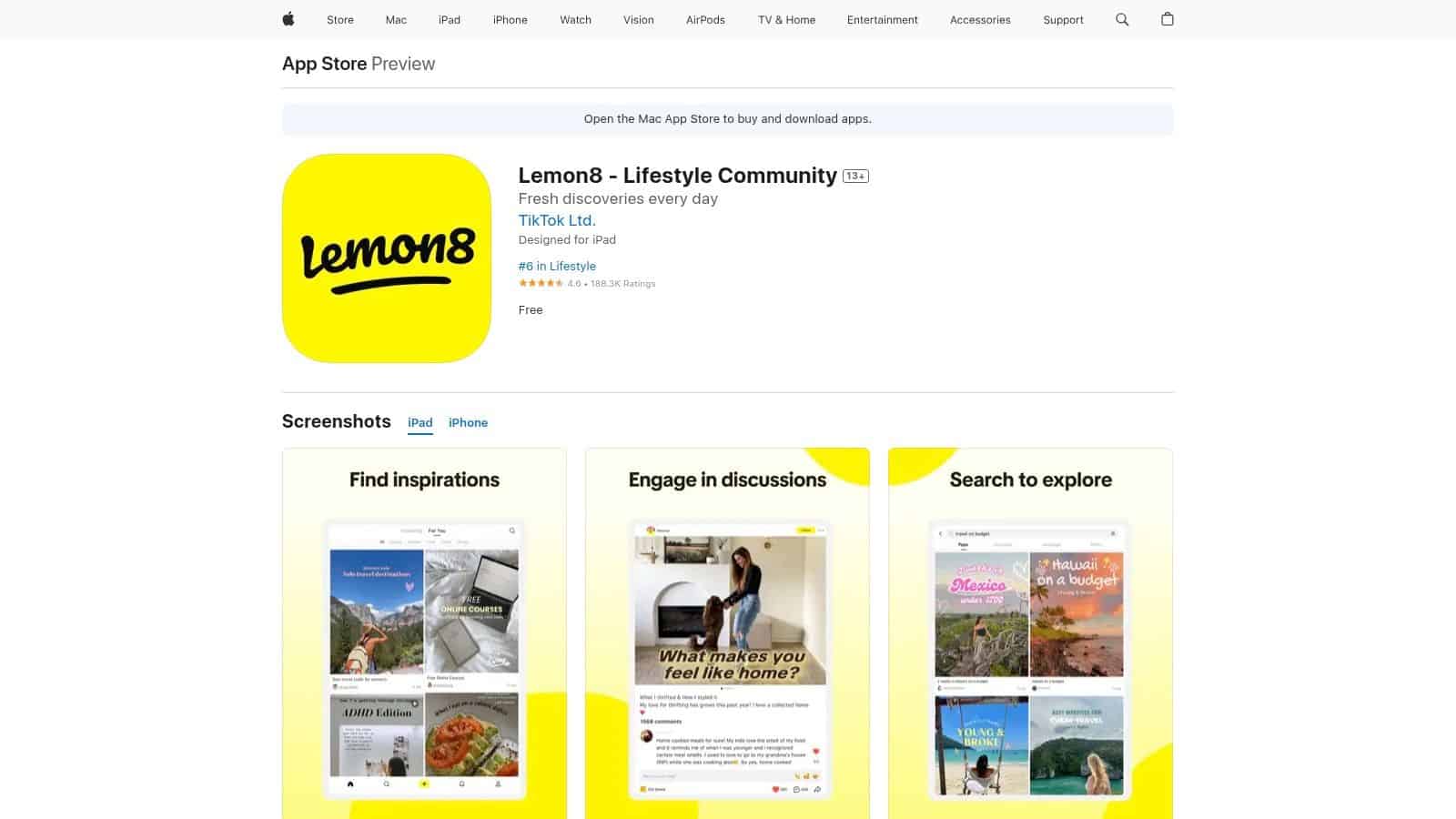
Lemon8’s core appeal lies in its sophisticated yet user-friendly editing suite, which includes templates, artistic fonts, and stickers that help users create polished content without leaving the app. It fosters community through topic-based feeds, allowing users to dive deep into their interests. With backing from the creators of TikTok, it has seen significant promotion and creator onboarding efforts, positioning it for potential growth.
Key Insights & Usage Tips
- Access & Availability: Free to use on iOS and Android devices.
- Discovery Tip: Engage with the “For You” page but also actively follow specific hashtags and creators within your niches (e.g., #lemon8food, #thriftfinds) to curate a more relevant and inspiring feed.
- Pros: Excellent built-in content creation tools, strong community focus around lifestyle topics, and growing awareness in the U.S. market.
- Cons: The content discovery algorithm can feel inconsistent, and as a ByteDance app, it may face regulatory scrutiny similar to TikTok.
Link: Lemon8 – Lifestyle Community
11. BeReal
BeReal offers a refreshing counter-narrative to the highly curated feeds of mainstream social networks. The platform is built around a single daily notification that prompts all users to post an unedited, dual-camera photo within a two-minute window. This unique mechanic fosters a sense of shared, authentic experience, stripping away the pressure for perfection and encouraging users to simply share their real, unfiltered moments.
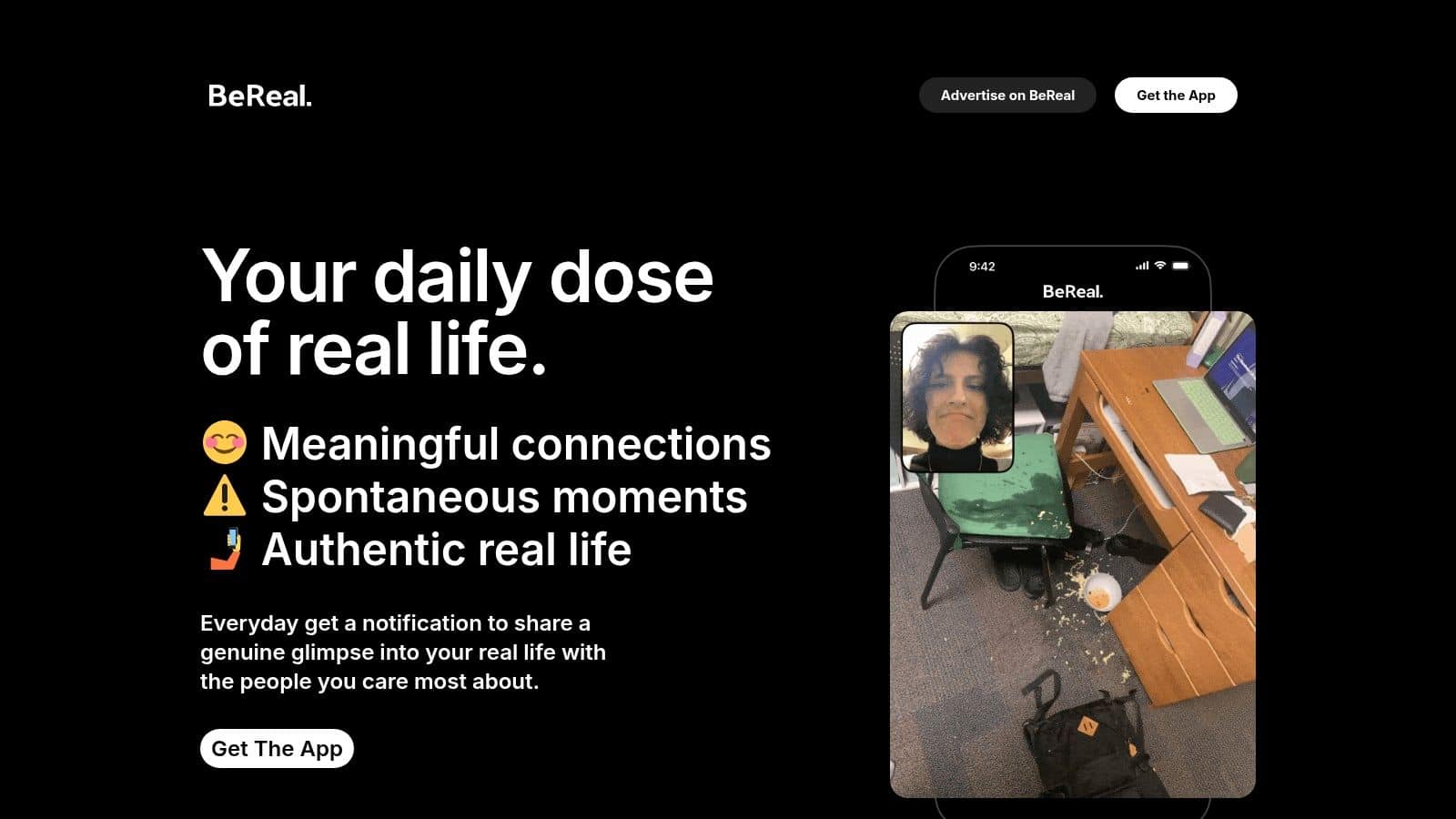
Its core appeal lies in its simplicity and commitment to authenticity, making it a compelling alternative for those fatigued by performance-driven platforms. While initially focused on close-friend circles, BeReal has expanded its discovery features, allowing it to maintain its place among emerging social media platforms by attracting users who crave genuine connection over polished content.
Key Insights & Usage Tips
- Access & Availability: Free to use on both iOS and Android devices. No subscription or premium features.
- Discovery Tip: Engage with the “Discovery” feed to see public BeReals from around the world. Reacting with “RealMojis” (custom emoji reactions using your own face) is the primary way to interact with others’ posts.
- Pros: Low-pressure, authenticity-focused format with a distinctive daily posting mechanic that encourages consistent, low-effort engagement.
- Cons: User engagement can wane after the initial novelty wears off; its intentionally limited design offers fewer tools for growth or broad discovery.
Link: BeReal
12. Geneva
Geneva positions itself as a “groups-first” communication app, bridging the gap between sprawling public social networks and siloed group chats. It provides an all-in-one “home” for communities, combining multiple communication formats to facilitate both online discussion and real-world connection. Unlike platforms like Discord, Geneva’s design is intentionally oriented toward fostering IRL (in-real-life) gatherings and local community building, making it a unique player among emerging social media platforms.
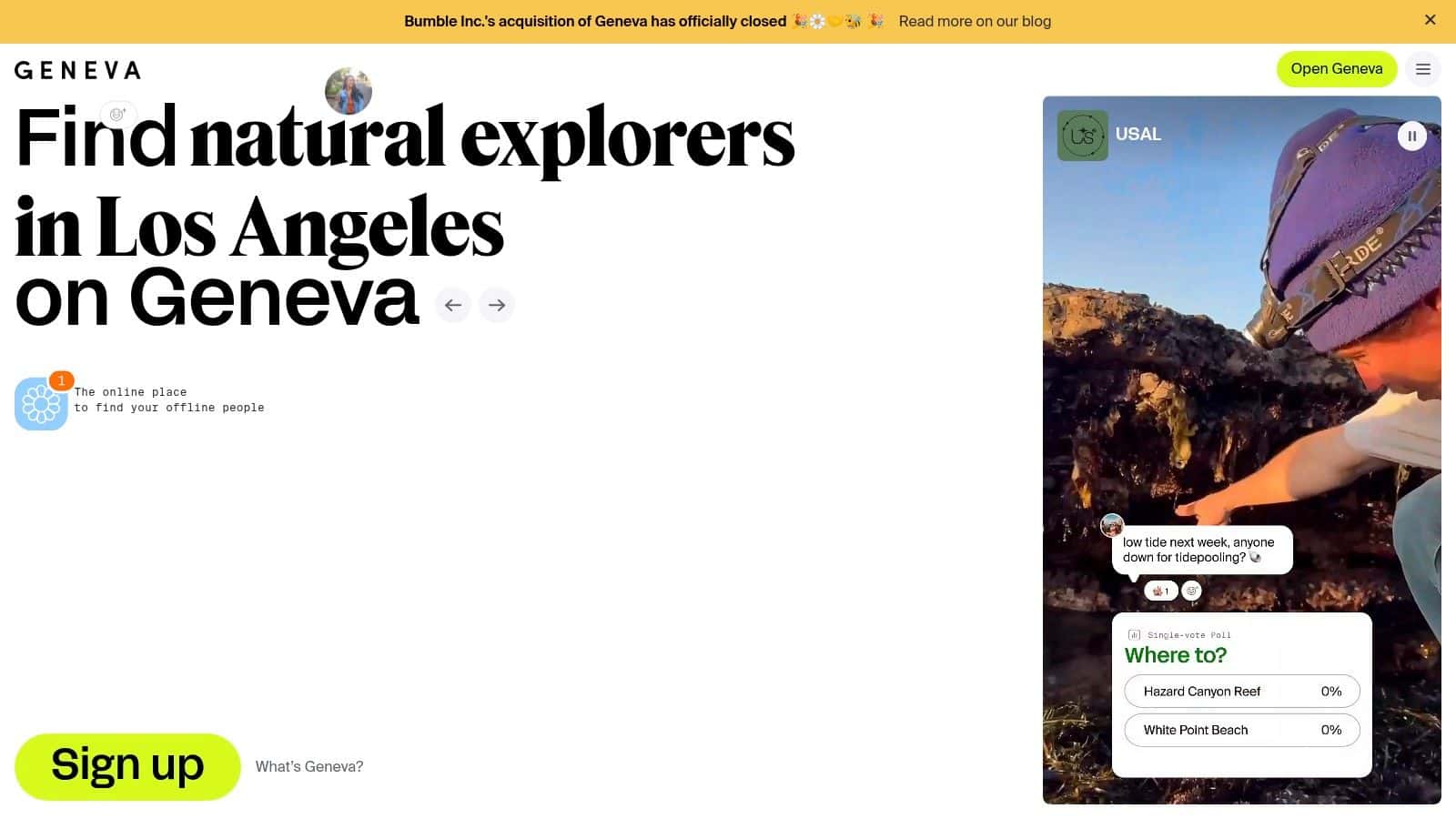
Each community space, or “home,” can contain various rooms dedicated to chat, long-form posts (forums), audio, video, and broadcasts. This flexibility allows groups to tailor their space precisely to their needs, from a book club planning its next meeting to a local creator collective hosting virtual workshops. The integrated event features, complete with RSVPs and calendar syncing, further solidify its utility for organizers aiming to build active, engaged groups that extend beyond the screen.
Key Insights & Usage Tips
- Access & Availability: Free to use on iOS, Android, and the web. No subscriptions are required for core features.
- Discovery Tip: Use the in-app discovery tab to find local groups in major U.S. cities based on interests like hiking, art, or professional networking. Joining an established local group is a great way to learn the platform’s features.
- Pros: An excellent all-in-one solution for managing both online and offline communities. The interface is clean, user-friendly, and less overwhelming than competitors.
- Cons: Community discovery can be limited outside of major metropolitan areas. Its past as an invite-only app has sometimes created friction for new user acquisition.
Link: Geneva
Emerging Social Media Platforms Comparison Chart
| Platform | Core Features/USP ✨ | User Experience ★★★★☆ | Value Proposition 💰 | Target Audience 👥 | Price Points 💰 |
|---|---|---|---|---|---|
| Apple App Store – Social Networking | Curated discovery, strong safety/privacy 🏆 | Seamless installs & updates ★★★★☆ | Trusted, secure app marketplace | iOS users seeking vetted social apps 👥 | Paid & free apps |
| Google Play – Social | Vast app inventory, wishlist, pre-registration | Wide device compatibility ★★★☆☆ | Massive choice, early Android launches | Android users & Chromebook owners 👥 | Free/paid/in-app |
| Product Hunt | Community upvotes, founder feedback, trending topics | Dynamic launch-day buzz ★★★☆☆ | Early discovery, direct founder access | Tech enthusiasts, early adopters 👥 | Free |
| BetaList | Pre-launch startups, invite/waitlists | Early-stage access, limited reviews ★★☆☆☆ | Access to apps pre-store launch | Startup hunters, beta testers 👥 | Free |
| Threads by Instagram (Meta) | Instagram integration, custom feeds, desktop UI | Large network, frequent updates ★★★★☆ | Leverages Instagram’s user base | Instagram users wanting text-centric 👥 | Free |
| Bluesky | Decentralized AT Protocol, feed portability | Open ecosystem, evolving tools ★★★☆☆ | User control, decentralization | Privacy-conscious and early adopters 👥 | Free |
| Mastodon | Federated servers, no ads, chronological feeds | Privacy-focused, community governance ★★★★☆ | Ad-free, user-governed instance choice | Privacy-aware, community-centric 👥 | Free |
| Farcaster via Warpcast | Decentralized microblogging, crypto ID | Developer-friendly, active innovation ★★★☆☆ | Web3 integration, portable identity | Web3, crypto-savvy early adopters 👥 | Free |
| Hive Social | Chronological feed, creative self-expression | Simple UX, evolving Android ★★★☆☆ | Algorithm-free, expressive platform | Mobile-first creators & social users 👥 | Free |
| Lemon8 | Lifestyle content, creation tools, TikTok cross-promotion | Polished posts, niche communities ★★★☆☆ | Strong creation tools, emerging US presence | Lifestyle content creators & fans 👥 | Free |
| BeReal | Daily prompt, dual-camera, minimal editing | Authentic, low-pressure sharing ★★★☆☆ | Unique, authenticity-focused social format | Users valuing genuine moments 👥 | Free |
| Geneva | Multi-room chat, audio/video, local group discovery | Community-focused, event planning ★★★☆☆ | IRL+online communities, all-in-one social app | Groups & event organizers 👥 | Free |
The digital landscape is in constant flux, but the recent explosion of emerging social media platforms signals a more profound shift than just another cycle of new apps. As we’ve explored platforms from the decentralized frontiers of Bluesky and Farcaster to the authenticity-driven spaces of BeReal and the niche communities of Geneva, three core themes consistently surface: decentralization, niche community focus, and a demand for genuine connection.
The era of the monolithic, one-size-fits-all social network is fragmenting. Users are actively seeking alternatives that offer greater control over their data, more meaningful interactions, and communities built around shared interests rather than just broad social graphs. This fragmentation isn’t a sign of chaos; it’s a market correction toward purpose-built platforms that serve specific needs, a trend that savvy marketers and brands cannot afford to ignore.
Your Strategic Framework for Adoption
Jumping onto every new platform is not a sustainable strategy. Instead, a deliberate approach is essential. Use the following framework to evaluate which of these emerging social media platforms aligns with your specific goals.
1. Define Your Primary Objective:
- Brand Awareness: If your goal is broad reach, platforms with rapid growth and media buzz like Threads or Lemon8 might be your best bet. Their familiar interfaces lower the barrier to entry for mass adoption.
- Community Engagement: For building a dedicated, highly-engaged community, look to platforms like Geneva or Mastodon. These are designed for deep conversations and fostering a sense of belonging around specific topics.
- Lead Generation & Tech Audiences: If you’re targeting a tech-savvy, early-adopter demographic, decentralized platforms like Bluesky and Farcaster offer a direct line to developers, crypto enthusiasts, and startup founders who are shaping the next wave of technology.
- Authentic Brand Storytelling: To build trust and showcase a more human side of your brand, the raw, unpolished format of BeReal or the visual, journal-like nature of Hive Social could be powerful tools.
2. Assess Your Resource Commitment:
- Low Lift: Platforms like BeReal or Threads require minimal unique content creation initially and can be integrated into existing workflows.
- Medium Lift: Hive Social and Lemon8 demand more visually-driven, curated content, requiring a greater investment in creative assets.
- High Lift: Decentralized platforms like Mastodon and Farcaster have a steeper learning curve. They require a genuine commitment to understanding the culture and participating authentically to see results.
3. Analyze the Platform’s Longevity:
Consider the platform’s backing and growth indicators. While Meta’s backing gives Threads a significant advantage, the community-driven, open-protocol nature of Bluesky and Mastodon provides a different kind of resilience. Don’t discount the smaller players, but balance the potential rewards of being an early adopter with the risk of the platform failing to gain critical mass.
The key takeaway is that the future of social media is not about being everywhere. It’s about being in the right places, where your audience is not just present but actively engaged. Early adoption on the right platform can provide an unmatched competitive advantage, allowing you to build authority and community before the space becomes saturated. The platforms detailed in this guide are not just novelties; they are windows into the future of digital interaction.
To stay ahead of these trends and build a resilient digital strategy, explore the in-depth guides and resources at Tech Geekers. Our analyses help you cut through the noise and focus on the technologies that truly matter for your growth. Visit us at Tech Geekers to future-proof your digital toolkit.
